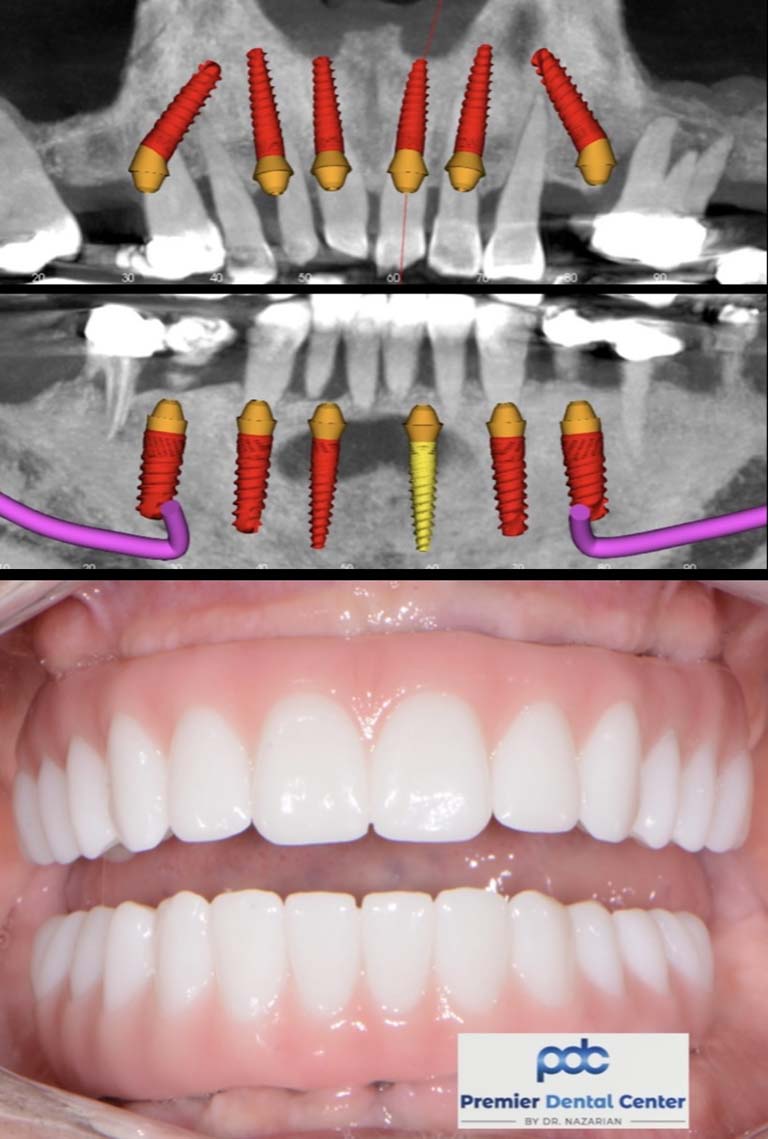Dental Sense Things To Know Before You Buy
Table of ContentsThe Of Dental SenseThe Main Principles Of Dental Sense Dental Sense Fundamentals ExplainedA Biased View of Dental Sense
are clinical devices operatively implanted into the jaw to restore an individual's capability to eat or their appearance. They supply assistance for artificial (phony) teeth, such as crowns, bridges, or dentures. When a tooth is shed as a result of injury or condition, an individual can experience problems such as rapid bone loss, defective speech, or modifications to eating patterns that result in discomfort.Oral dental implant systems contain a dental implant body and oral implant joint and might likewise include a joint addiction screw. Wisdom tooth cavity. The oral implant body is surgically inserted in the jawbone instead of the tooth's root. The dental implant joint is generally attached to the dental implant body by the joint addiction screw and expands through gums into the mouth to sustain the attached man-made teeth
(https://www.pubpub.org/user/matthew-music)Structure of The Oral Implant System selecting oral implants, talk with your dental service provider concerning the possible benefits and risks, and whether you are a prospect for the treatment. Points to think about: Your total health and wellness is a crucial consider determining whether you are a great prospect for oral implants, how much time it will certainly require to heal, and the length of time the implant may stay in area.
Smoking cigarettes might affect the healing procedure and reduce the long-term success of the dental implant. The healing process for the implant body might take a number of months or longer, during which time you commonly have a short-lived abutment instead of the tooth. the dental implant procedure: Very carefully comply with the dental health guidelines offered to you by your oral supplier.
Getting My Dental Sense To Work
Implant failing can result in the need for one more procedure to take care of or replace the implant system. Recovers the capacity to chew Restores aesthetic appearance Aids maintain the jawbone from diminishing as a result of bone loss Preserves the health of the bordering bone and gum tissues Aids keep adjacent (close-by) teeth steady Boosts quality of life Damage to surrounding all-natural teeth during dental implant placement Injury to the surrounding tissues during surgery, such as sinus perforation Injury throughout surgical treatment (as an example, fracture of bordering jawbone) Insufficient feature, such as really feeling like the teeth do not attack together usually A feeling that the tooth hangs or twisting in area resulting from an abutment screw loosening Implant body failing (looseness of the implant body) as a result of systemic infection, which may be more probable in patients with unchecked diabetes mellitus as a result of local infection in bone and periodontals supporting the dental implant body as a result of delayed recovery, which might be more probable in patients who smoke Difficulty cleansing the gum tissues around the implant, resulting in inadequate dental hygiene Untreated periodontal illness Post-surgical feeling numb due to nerve impingement or damage Constantly notify health care companies and imaging technicians that you have dental implants before any kind of magnetic vibration imaging (MRI) published here or x-ray treatments.
FDA is not mindful of any kind of unfavorable occasions reported for MRI or x-ray treatments with oral implants. Dental implants systems are generally constructed from materials that follow global agreement criteria of the International Company for Standardization (ISO) or ASTM International. These standards have details of what makes a risk-free product.

A dental implant is a structure that replaces a missing out on tooth. With screw-like tools, the doctor inserts a dental implant into the jawbone, and it acts as a support for a man-made tooth, called a crown.
The Of Dental Sense
Some individuals are not qualified for dental implant surgery. It is for oral doctors to operate on people with: severe illnessuncontrollable metabolic diseasebone or soft cells illness or infectionIf these problems are solved, a person can have the surgical treatment. In, dental specialists abstain from operating people with: If people with any one of the above undertake oral implant surgical treatment, there is a higher risk of the implant failing.

Oral dental implant surgical treatment is an individualized process. It's not the same for everyone. The complying with gives a general review of what you can expect your dental practitioner, oral specialist, periodontist or prosthodontist to do: Position the implant surgically. Give you time to heal. Attach the message and last crown, bridge or denture.
Next off, your surgeon will meticulously position the dental implant into your jaw. Your surgeon will certainly reposition your gums and shut the cut with stitches. If your dental implant is near the front of your mouth, your dental expert will make a temporary tooth for you to wear till you heal. This way, you won't have a space in your smile while you recover.
The 8-Minute Rule for Dental Sense
Your supplier can inform you what to anticipate in your situation. During the healing phase, your jawbone must fuse to the dental implant. This procedure, called osseointegration, is important for stability and lasting success. This process can take anywhere from 3 to 9 months. Sometimes, it may take longer.
When your implant heals, your dental expert can affix the abutment (little connector article) and your last repair (crown, bridge or denture). This generally takes regarding one hour to finish and may call for a second small surgical treatment. You shouldn't really feel any kind of pain throughout your dental implant procedure because your company will certainly use medication to numb your gum tissues.